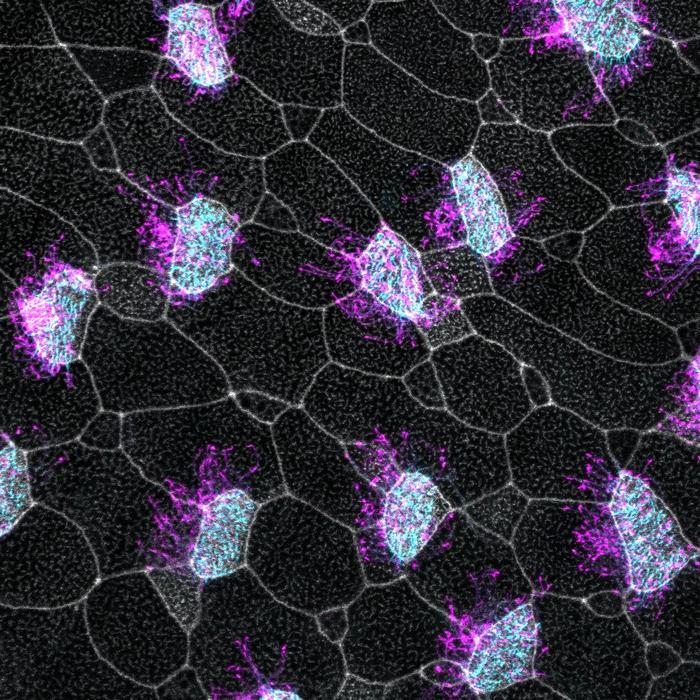
Autism spectrum disorder (ASD) represents a constellation of complex neurodevelopmental conditions characterized by difficulties in social communication and the presence of restricted, repetitive behaviors. Affecting approximately one in every hundred children globally, autism’s early diagnosis remains a crucial but challenging objective for improving patient outcomes through early intervention and tailored therapies. Despite significant advances in genetic research, the intricate genetic architecture of autism continues to defy straightforward risk prediction models due to the involvement of hundreds of contributing genes, each with variable penetrance and mechanisms of action.
A compelling development in the understanding of autism’s biological roots has emerged from recent studies linking ASD with congenital heart disease (CHD), a physical anomaly affecting the structure and function of the heart evident at birth. This co-occurrence has long puzzled clinicians and scientists since ASD primarily impacts neurodevelopment, while CHD is considered a cardiac structural disorder. The capacity to identify CHD at birth suggests a potential biomarker or early flag for children at increased risk of developing autism, opening avenues for earlier surveillance and intervention strategies.
Leading this groundbreaking investigation, Dr. Helen Willsey and her research team at the University of California, San Francisco have illuminated a shared biological foundation between autism and congenital heart disease, centered around cellular organelles known as cilia. These minuscule, hair-like projections studding the surface of almost every mammalian cell play pivotal roles in sensing environmental cues, facilitating intercellular signaling, and governing the movement and structural development of organs during embryogenesis. The study’s results, published in Development on June 24, 2025, provide a transformative lens through which autism and CHD are understood as intersecting pathologies unified by ciliary dysfunction.
.adsslot_CA4L27GYtc{width:728px !important;height:90px !important;}
@media(max-width:1199px){ .adsslot_CA4L27GYtc{width:468px !important;height:60px !important;}
}
@media(max-width:767px){ .adsslot_CA4L27GYtc{width:320px !important;height:50px !important;}
}
ADVERTISEMENT
Dr. Willsey elaborates on the formidable complexity intrinsic to dissecting the genetic interplay between autism and CHD, noting the sheer magnitude of implicated genes — with previous research identifying 361 genes that elevate risks for either or both conditions. The central question her team posed was whether the subset of CHD-associated genes exerting direct effects on neuronal cells might converge with autism risk factors, potentially revealing critical nodes of developmental vulnerability within the intertwined biology of brain and heart formation.
To probe these hypotheses, co-author Nia Teerikorpi conducted meticulous experiments involving immature human neurons genetically engineered to harbor mutations in each of the 361 candidate genes. This functional screen identified 45 genes whose loss profoundly impaired neuronal growth and morphology. A striking revelation emerged as all these genes were intimately linked to the structure and function of cilia. These organelles are essential in orchestrating key signaling pathways, such as Hedgehog and Wnt, which modulate cellular proliferation, migration, and differentiation during central nervous system and cardiac development.
Among the identified genes, taok1 rose to prominence for its dual association with autism risk and predicted involvement in congenital heart disease, an intersection never before empirically tested in vivo. The research team employed Xenopus laevis frog embryos as a model to experimentally modulate taok1 expression, taking advantage of the organism’s amenability to genetic manipulation and its conserved developmental pathways. Upon disruption of taok1, they observed profound defects in cilia formation on cellular surfaces, accompanied by abnormal morphogenesis of cardiac and neural tissues. These findings provide compelling functional validation that taok1 is a key regulatory node in the shared developmental pathways disrupted in autism and congenital heart malformations.
The broader implication of this research indicates that defects in ciliary biology likely represent a fundamental mechanistic bridge underlying multiple neurodevelopmental and congenital disorders. The other 44 genes identified, all integral to ciliary function, now warrant in-depth investigation into their roles in cardiac and neural development. Perturbations in cilia can disrupt the spatiotemporal signaling milieu essential for organogenesis, leading to malformations and functional impairments seen in both ASD and CHD.
Looking beyond immediate results, Dr. Willsey and her team emphasize that their discoveries represent only the beginning of unraveling the molecular entanglement between autism and cardiac developmental disorders. The intersecting gene networks implicated in ciliary dynamics offer a rich tapestry of potential diagnostic markers and therapeutic targets. Prioritizing patients with mutations in these cilia-associated genes for early neurodevelopmental monitoring could facilitate preemptive interventions, possibly attenuating the severity of ASD manifestations or improving cardiac outcomes through timely clinical management.
This research ushers in a paradigm shift, challenging the traditional view of autism and congenital heart disease as distinct clinical entities and instead positing that their pathogenesis is interwoven at a cellular and molecular level. Understanding ciliary biology’s centrality could pave the way for precision medicine approaches that integrate genetic, developmental, and clinical data to stratify risk and tailor therapies for affected individuals.
Moreover, it compels the scientific community to explore ciliary function across other congenital and neurodevelopmental disorders, potentially revealing a broader spectrum of ciliopathies with overlapping phenotypic features. Such insights would transform developmental biology, foster interdisciplinary collaborations, and galvanize new research directions in genetics, cell biology, and clinical neuroscience.
In conclusion, the work spearheaded by Dr. Helen Willsey’s group provides a critical breakthrough in linking autism spectrum disorders to congenital heart disease through the lens of ciliary dysfunction. By elucidating the shared genetic and cellular underpinnings, this study opens exciting prospects for early detection, intervention, and a deeper mechanistic understanding of these complex conditions. The findings published in Development hold promise not only for affected families but also for the broader endeavor to decode human developmental biology and pathology.
Subject of Research: Animals
Article Title: Ciliary biology intersects autism and congenital heart disease
News Publication Date: 24-Jun-2025
References:
Teerikorpi, N., McCluskey, K. E., Bader, E., Lasser, M.C., Wang, S., Nguyen, C. H., Schmidt, J. D., Kostyanovskaya, E., Sun, N., Dea, J., et al. (2025). Ciliary biology intersects autism and congenital heart disease. Development 152, dev204295. doi:10.1242/dev.204295
Image Credits: James Schmidt
Keywords: autism spectrum disorder, congenital heart disease, cilia, neurodevelopment, genetics, taok1, developmental biology, precision medicine, neurogenetics, embryonic development
Tags: autism and congenital anomaliesautism diagnosis challengesautism spectrum disorder early diagnosisbiomarkers for autism riskcongenital heart disease connection autismDr. Helen Willsey research findingsearly intervention strategies for autismgenetic research in autismheart structural disorders and autismneurodevelopmental disorders and heart defectssocial communication difficulties in autismtailored therapies for autism spectrum disorder


